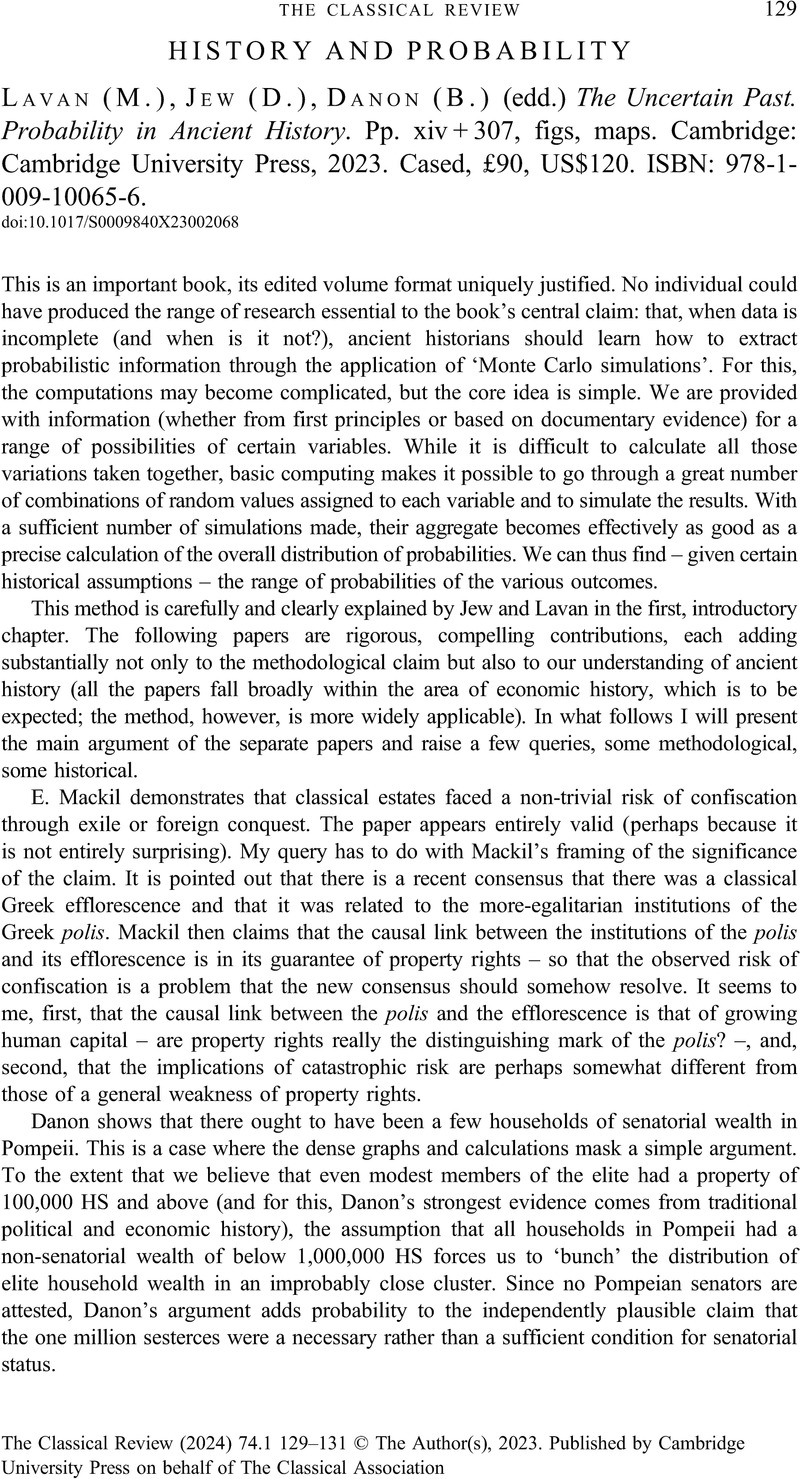No CrossRef data available.
Article contents
HISTORY AND PROBABILITY - (M.) Lavan, (D.) Jew, (B.) Danon (edd.) The Uncertain Past. Probability in Ancient History. Pp. xiv + 307, figs, maps. Cambridge: Cambridge University Press, 2023. Cased, £90, US$120. ISBN: 978-1-009-10065-6.
Review products
(M.) Lavan, (D.) Jew, (B.) Danon (edd.) The Uncertain Past. Probability in Ancient History. Pp. xiv + 307, figs, maps. Cambridge: Cambridge University Press, 2023. Cased, £90, US$120. ISBN: 978-1-009-10065-6.
Published online by Cambridge University Press: 23 November 2023
Abstract
An abstract is not available for this content so a preview has been provided. Please use the Get access link above for information on how to access this content.

Information
- Type
- Reviews
- Information
- Copyright
- Copyright © The Author(s), 2023. Published by Cambridge University Press on behalf of The Classical Association


